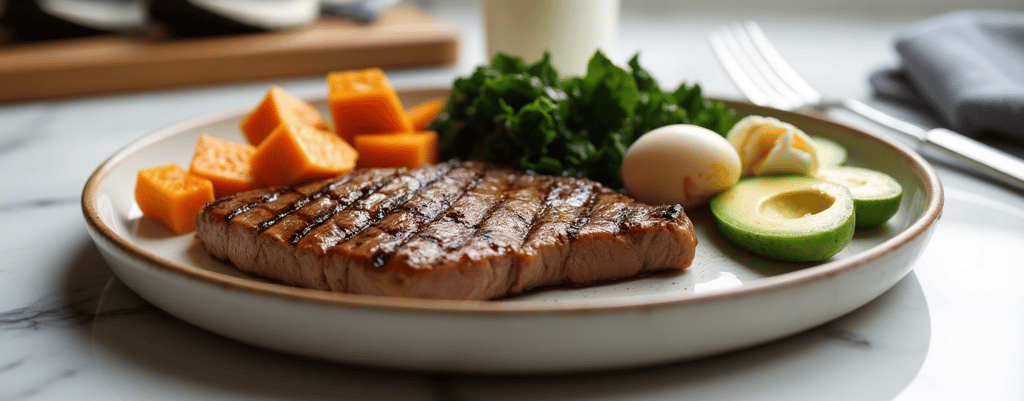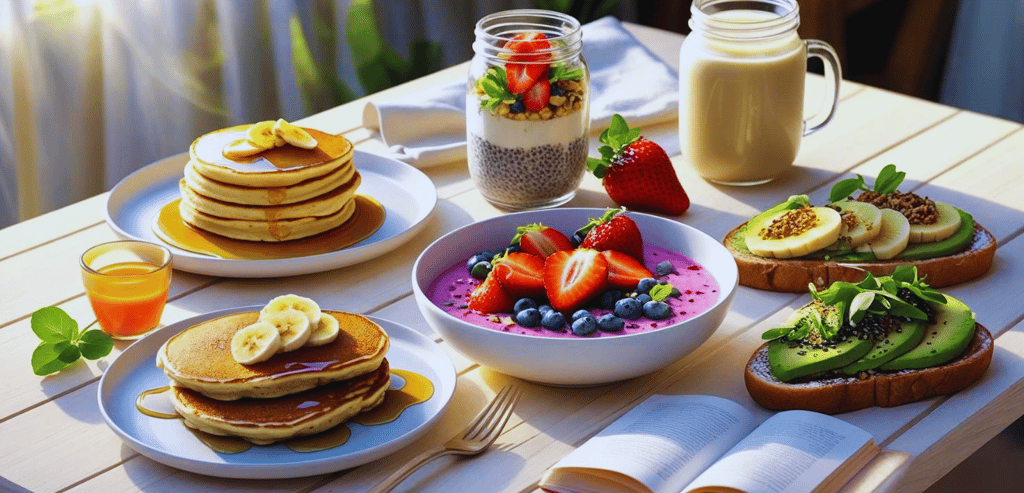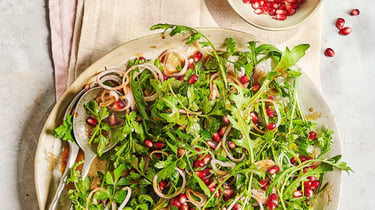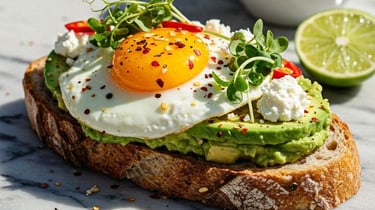Why Athletes Love the Paleo Diet
Struggling with plant-based energy? See how paleo for sports supports strength, recovery, and focus for vegan athletes. Explore the top 5 reasons!
PALEO TIPS


The Paleo Diet for Athletes: Fueling Performance Without the Caveman Club
So... what should you eat if you’re serious about fitness?
If you've ever Googled "best diet for athletes," you've probably spiraled into a black hole of conflicting advice. Carbs are evil—no wait, they’re essential! Fat’s your friend—but also your enemy? It’s enough to make your protein shake curdle.
That’s where the Paleo diet comes in—aka the “eat like a caveman” lifestyle. It’s all about getting back to basics with real food: meat, fish, veggies, fruit, nuts, seeds, and none of that processed junk. Athletes are jumping on board, hoping for better recovery, more energy, and fewer injuries.
But can a Stone Age-style diet really keep up with the needs of a modern athlete burning through calories like crazy? Short answer: kinda—but you’ll probably want to tweak it a bit.
This guide breaks down Paleo for athletes in plain English. We'll chat about the perks, the challenges, how to make it work without losing your mind, and whether it’s the right fit for you. Let’s dive in.veryday life — whether you're trying to build muscle, drop a few pounds, or just feel better about what’s on your plate.


What Even Is the Paleo Diet (And Does It Work for Athletes)?
Alright, so the Paleo diet is pretty much a throwback to what our ancestors supposedly ate before farming was a thing. Think:
✅ Grass-fed meat
✅ Wild-caught fish
✅ Fresh veggies & fruit
✅ Nuts and seeds
And nope to:
🚫 Grains (yep, no bread)
🚫 Legumes (bye, beans)
🚫 Dairy (unless you're lenient)
🚫 Sugar and processed snacks
🚫 Weird oils and additives
The idea is that our bodies are still wired for those old-school foods, and modern eating (hello, pizza rolls) is throwing us off. It’s called the “mismatch hypothesis”, and it basically says our guts haven’t caught up with DoorDash.
Of course, let’s not kid ourselves—real cavemen probably weren’t skipping out on every carb. So today’s Paleo diet is more “inspired by the past” than a literal reenactment.
For athletes, Paleo tends to look like this:
🥑 35% fat
🥦 35% carbs (mostly from fruit & root veggies)
🥩 30% protein
It’s not crazy low-carb, but when you ditch grains and legumes, it can lean that way fast.
Why Athletes Are Giving Paleo a Try
1. Real Food = Real Fuel
One big win: Paleo cuts out the junk. That means your body’s running on whole, nutrient-dense foods packed with vitamins, minerals, and antioxidants. These are all clutch for recovery and performance. Bonus: your plate’s gonna look super colorful (and Insta-worthy).
2. Protein Goals = Crushed
If muscle repair and recovery are your game, Paleo’s got your back. It’s naturally loaded with quality protein and BCAAs (those magical aminos that help muscles rebuild). Most athletes need around 1.2 to 2.2 grams per kg of body weight per day, and Paleo makes it pretty easy to hit that.
3. Fat That Fuels
Rather than relying on constant carb snacks, Paleo encourages using healthy fats—think avocado, olive oil, coconut oil—as slow-burning fuel. It’s especially great for endurance athletes who don’t want to bonk halfway through a long session.
4. Less Inflammation, More Vibes
Processed foods = inflammation. Paleo skips all that, which might mean fewer aches, faster bounce-back time, and fewer sick days. Some folks even notice better gut health and less bloating.
5. Body Comp + Metabolism = Boosted
Lots of athletes on Paleo notice lean muscle gains, better energy levels, and even steadier blood sugar. Basically, it's like giving your metabolism a tune-up.
1. Where the Carbs At?
Here’s the deal—Paleo can be too low in carbs for athletes who train hard. Carbs are still king when it comes to sprinting, lifting, or doing anything intense. If you cut them too much, your energy tanks, and recovery slows to a crawl.
Strength athletes might need 7–10g/kg of carbs daily.
Endurance folks need ‘em too, especially post-run.
Low carb + high training = cranky athlete.
2. Nutrient Gaps Can Sneak In
Say goodbye to dairy, grains, and legumes—and suddenly you’re missing out on:
🦴 Calcium + Vitamin D (hello, bone health)
🌾 Fiber (important for gut vibes)
🔋 Iron & B vitamins (energy + oxygen transport)
You’ll need to get creative—or supplement smart.
3. It’s Not Always Easy to Stick With
Let’s be real—eating Paleo 24/7 can be a bit much:
Takes time to prep meals
Can get really pricey
Makes eating out or traveling tricky
May lead to food anxiety or obsessiveness
Some athletes actually under-eat without realizing it
4. Your Gut Might Not Love It
Add exercise (which already stresses digestion) to a high-protein, high-veggie diet, and suddenly your stomach is staging a rebellion. Listen to your gut—literally.
1. Bring on the Carbs (At the Right Time)
Yes, carbs are still a thing—even on Paleo. Here’s how to sneak them in:
Before & after workouts: sweet potatoes, bananas, dates, even white rice if your body handles it
Carb cycling: More on heavy training days, less on rest days
2. Protein: Keep It Simple
Whole food first, but protein powders can totally help. Look for options like:
Beef collagen
Egg white powder
Whey (if your gut’s okay with it)
Post-workout shakes are your friend.
3. Fat Is Still Your BFF
Keep those healthy fats coming—avocados, olive oil, coconut milk. They’re great for energy, hormones, and keeping you full between meals.
4. Some Grains or Dairy? Not the End of the World
A lot of athletes go “80/20 Paleo.” So yes, some Greek yogurt or rice now and then isn’t going to ruin your game. Find what works for your body.
5. Don’t Ignore Meal Timing & Hydration
Eat enough, eat regularly, and drink like you mean it. Add a pinch of salt or electrolytes to your water—especially if you’re sweating buckets.
How Athletes Can Actually Make Paleo Work (Without Going Nuts)
The Not-So-Perfect Side of Paleo (Especially If You Train Hard)
Write a short text about your service
Write a short text about your service
Write a short text about your service






Who Should (and Maybe Shouldn’t) Try Paleo?
Great for:
Anyone cutting out processed junk
Endurance athletes using fat as fuel
People with gluten or gut issues
Folks looking to lean out or feel more energized
Maybe not ideal for:
High-volume or power athletes needing more carbs
Vegans or vegetarians (Paleo’s not bean-friendly)
Anyone struggling with disordered eating
Pregnant women, older adults needing extra calcium
Budget eaters—quality Paleo food ain’t cheap
Real-Life Tips for Starting Paleo (Without Losing Your Mind)
Start slow: Cut one processed thing at a time
Focus on quality: It’s not about being “perfect Paleo”
Meal prep = your BFF: Cook in batches, keep snacks on hand
Fuel your workouts: Don’t skimp on carbs around training
Listen to your body: If you’re tired, cranky, or weak—something’s off
Support digestion: Take probiotics, chew well, don’t eat too close to workouts
Hydrate well: Especially when training hard or in the heat
Paleo vs. Other Popular Diets (Quick Take)
Vs. Western diet: WAY cleaner and more nutrient-dense
Vs. Vegan: Paleo is great for protein, but vegan athletes can still crush it—with planning
Vs. Mediterranean: Also awesome. More flexible and includes things like legumes, grains, and dairy
So, Should You Try Paleo?
Short answer: Maybe! A flexible, sane version of Paleo can totally support athletic goals—especially if you’re into clean eating and want to feel strong, energized, and clear-headed.
Just remember: there’s no one-size-fits-all when it comes to nutrition. The best personalized diet plan is one that fuels your workouts, fits your life, and keeps you happy (yes, food joy matters!).
When in doubt? Call in the pros—sports dietitians are literal lifesavers when you're trying to dial in your fuel.
Quick FAQ Time
What can athletes eat on Paleo?
Meat, fish, eggs, fruits, veggies, nuts, seeds, and healthy fats. Some throw in sweet potatoes, limited dairy, or rice.
Does it work for endurance athletes?
Yep—especially with smart carb timing and enough calories.
How much protein do I need?
Around 1.2–2.2g/kg body weight/day. Totally doable with Paleo foods (and a good shake).
Can I eat carbs on Paleo?
Totally. Just go for smart ones—like sweet potatoes, bananas, and dates, especially around training.
What’s the catch?
It can be low in carbs, pricey, and socially tricky. But with a few tweaks, it’s totally doable.
Performance Paleo Essentials Pack
Designed for active lifestyles, this Paleo Collection features the best pre- and post-workout foods to keep you strong, focused, and full of clean energy


How Paleo Boosts Performance
Discover how switching to Paleo can improve endurance, focus, and recovery complete with recipe tips from our expert-approved Paleo Collection
